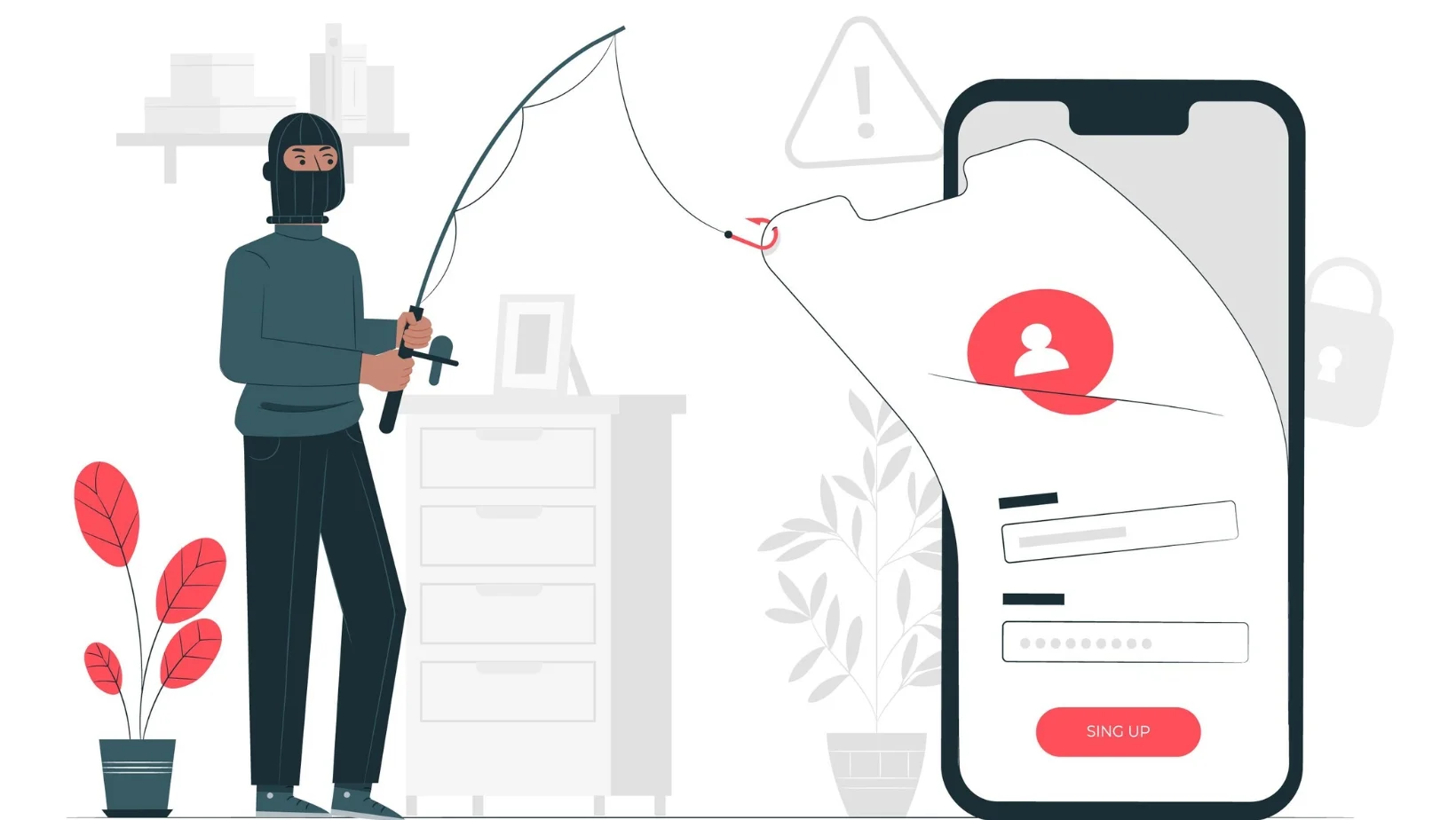What is Phishing? How to protect yourself from phishing ?

The readers are probably familiar with the word “fishing.” However, we are not talking about fishing in the sense of catching fish. In the context of cybersecurity, phishing is a type of cybercrime that involves sending fraudulent emails that appear to be from legitimate companies in order to trick recipients into revealing personal information, such as passwords and credit card numbers. Phishing attacks are one of the most common ways that hackers gain access to sensitive data, and they can have a devastating impact on individuals and businesses. Let us know How to protect yourself from phishing?
What is Phishing?
Hackers use phishing to steal users’ information, such as login information and credit card numbers, by sending fraudulent emails or messages that appear to be from a legitimate source.
The victim is tricked into clicking on a link that contains malware, and after clicking the link, the malware is downloaded to the device. Hackers also lock specific files on a computer or mobile or leak sensitive information as a part of a ransomware attack or other vicious attack.
Phishing attacks can take dire forms. In utmost cases, unconsented digital amount theft, shopping, and indeed fraud do.
Phishing attacks also are part of a larger attack on a marketable or government network. When a worker inadvertently clicks on a vicious link, the attacker makings access to the network.
This type of phishing attack can cause serious problems for an organization or individual. Organizations hit by phishing attacks can lose market share, reputation, customer trust, and more. Phishing attacks undermine customer trust in an organization’s security. We have seen many similar incidents in the past, and it is important to be aware of the risks.
Phishing techniques
Phishing attacks can be in a variety of ways. Let’s study the common phishing ways through which hackers carry out phishing attacks.
Email Phishing:
Basically a numbers pool. An attacker sends numerous fake and fraudulent emails hanging to lock the victim’s amount or account. When one among these benefactors of numerous emails clicks on the phishing link, they arrive as victims of phishing attacks.
As a part of the impersonation of a real association, attackers write emails in the same way as the association and use the association’s sign, typeface, facebook, yahoo, linkedin, hallmark, etc. Click on the email to convert the user.
Users are often pressured to make quick decisions, such as when their account expires or they need to change their password. If they do not take action within a specific period, their account may be locked or deleted.
It’s truly important to know or protect yourself from phishing whether the links transferred to these emails are genuine or fake. for case, facebook.com may be a valid domain from which emails can be opened. Again facebook.com isn’t a valid domain email. Also ‘0’ is used rather than the English letter ‘O’ which looks similar. Fraudsters use many analogous tricks. So before clicking on an email or link, always double-check if the address is correct.
Spear Phishing:
Spear phishing targets specific individuals or organizations. It is a more advanced form of phishing attack that uses sensitive information about individuals or organizations to lure victims. For example:
- A buttinsky researches the names of an association’s workers and achieves access to the newest design checks.
- The association’s marketing director emulates this. Indeed using the identical text, style, and hallmark because of the company’s standard email.
- Clicking on the handed link shows the password-defended document, which is really an alike copy of the stolen dispatch.
- A malicious actor asks you to log in to view a document. After you log in, they steal your login information and use it to infiltrate the association’s network.
How to protect yourself from phishing
Whether a private or an association, there are some important ways to accept to survive a phishing attack. Caution is the key to surviving these problems. Fake messages constantly contain too many small errors, like spelling errors, slightly incorrect email addresses, etc. Users can greatly avoid phishing attacks by taking some time to check before clicking on suspicious messages or emails.
To protect yourself from phishing? follow these ways:
- Two-factor authentication makes hacking nearly impossible. So use two-factor authentication for any account. Whether or not the hacker gets the username and password, they’re going to not be suitable to pierce the account. And don’t share the OTP code in your message or email with anyone. It’ll keep you safe from hacking.
- Organizations should use security software and keep it up to date to prevent new security risks.
- Save data by taking a backup. You’ll back over to a non-networked medium, like an external hard drive or cloud storage.
- Anyone who asks for sensitive information via email is committing fraud
- Look for spelling and grammatical wrong in the email, as professional emails don’t contain analogous wrongs.
- Don’t trust sources that don’t know your name or account.
- Before clicking on the attachment link entered within the email, verify that everything is correct.
- Verify the email address of the sender.
- Verify that the website you’re accessing is a secure website. However, If the link of the website does not start with “HTTPS”, then it’s better not to use that website.
- Always keep your antivirus, browser, and OS up-to-date, as updated versions give protection against viruses and malware.
- You can find out whether the link is dangerous by entering the VirusTotal site by copying the link without directly clicking on the link set up in the suspicious email.
